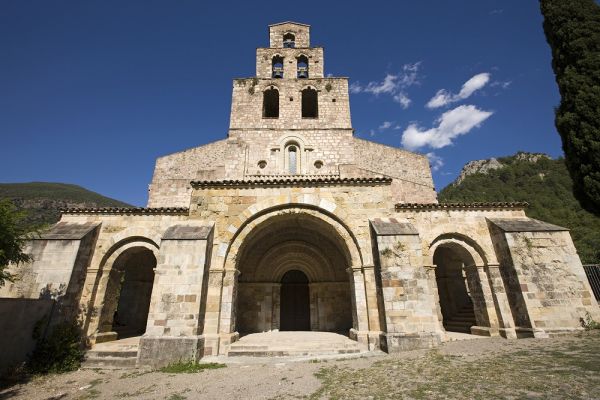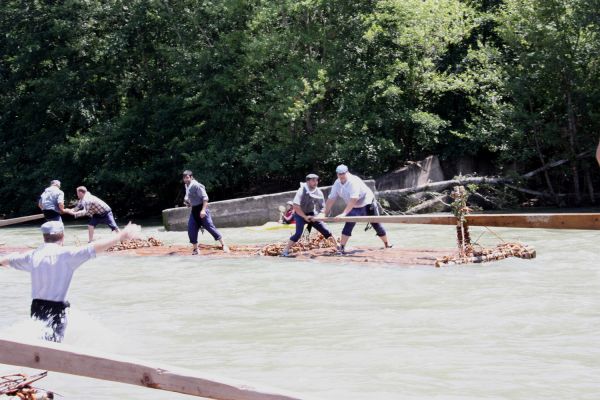Gerri de la Sal, located on the northern slopes of Pallars Sobirà, is a small medieval town that still retains its enclosed precinct. It is notable on account of its industrial and architectural heritage: the
salt storehouse and the
monastery of Santa Maria.
THE ROYAL SALT STOREHOUSE OF GERRISalt was, until recently, the engine that drove the economy of
Gerri la Sal. Today, it still has the Salt House, or
Reial Alfolí de Gerri, the large warehouse where, from the
Middle Ages, salt was extracted, treated and stored. It is thought to be the building that covers the largest floorplan in the whole of Pallars, and it now houses the
Gerri de la Sal museum. Here you can learn all about the process of production, transformation, storage and marketing of the white gold, salt.
THE MONASTERY OF SANTA MARIAJust before you reach the village, on the other side of the river, there is a magnificent example of
Catalan Romanesque architecture, the
monastery of Santa Maria. It adopted the
Benedictine rule in 839 and became an important centre for conversion to Christianity. Centuries later, however, it was
disentailed and today all that remains is the church, with its entrance porch. The interior has
30 decorated capitals.
DAY OF THE RAFTSMEN'S FESTIVALIf you visit Gerri la Sal during the
first week of July, take advantage of your stay to also visit Pobla de Segur, just 10 minutes away by car. A
raftsmen's festival has been held here since
1979. The high-point of the festival takes place on the Sunday morning when
the rafts come down the river. The raftsmen, dressed in traditional attire, sail down the river for five kilometres between
Presa de la Llania and
Pont de Claverol.
Have we managed to inspire you? If you have any other interesting suggestions please send them to us on Facebook or publish your photos on Instagram with the hashtag #patrimonicultural


